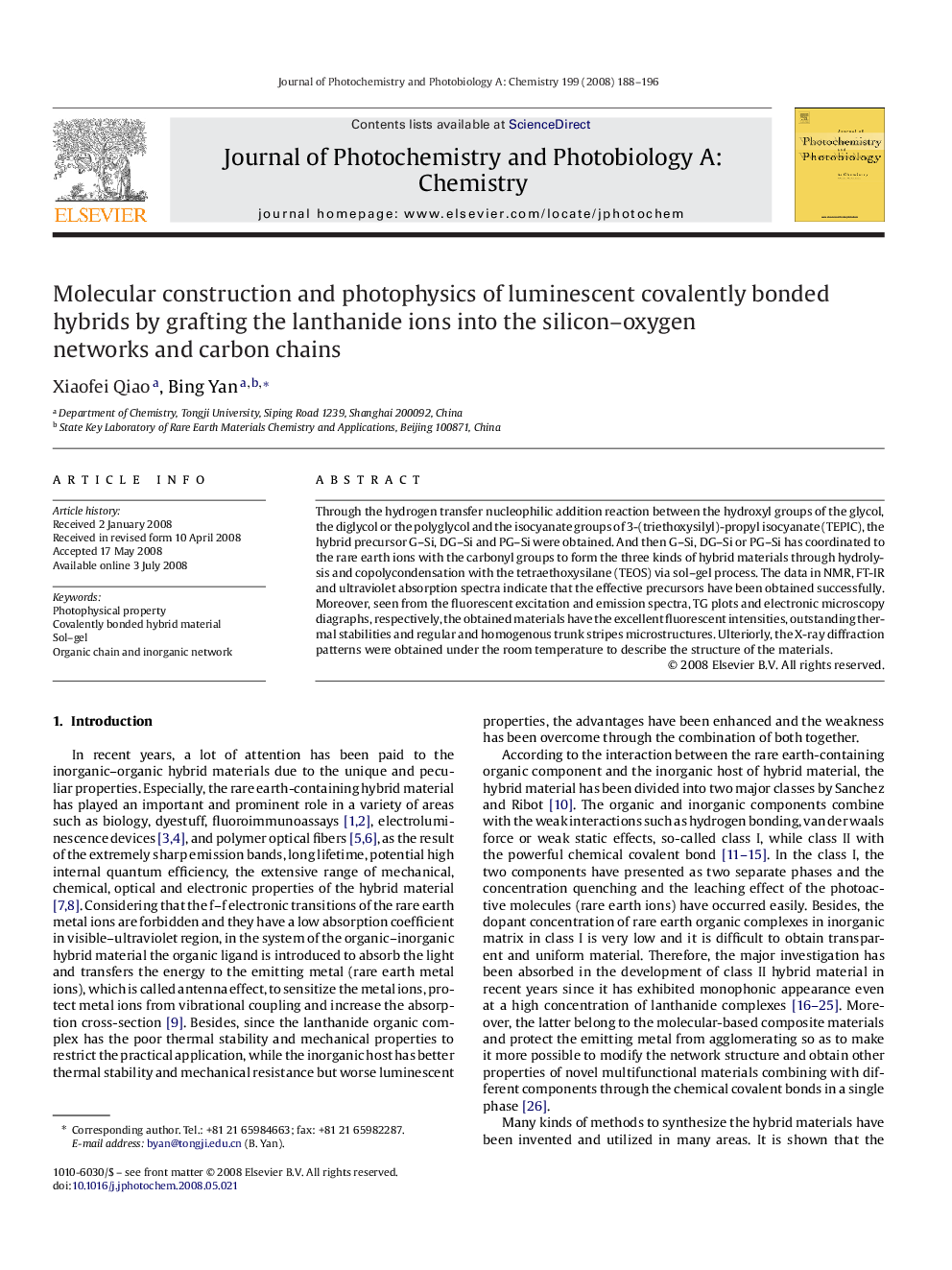| Article ID | Journal | Published Year | Pages | File Type |
|---|---|---|---|---|
| 29078 | Journal of Photochemistry and Photobiology A: Chemistry | 2008 | 9 Pages |
Through the hydrogen transfer nucleophilic addition reaction between the hydroxyl groups of the glycol, the diglycol or the polyglycol and the isocyanate groups of 3-(triethoxysilyl)-propyl isocyanate (TEPIC), the hybrid precursor G–Si, DG–Si and PG–Si were obtained. And then G–Si, DG–Si or PG–Si has coordinated to the rare earth ions with the carbonyl groups to form the three kinds of hybrid materials through hydrolysis and copolycondensation with the tetraethoxysilane (TEOS) via sol–gel process. The data in NMR, FT-IR and ultraviolet absorption spectra indicate that the effective precursors have been obtained successfully. Moreover, seen from the fluorescent excitation and emission spectra, TG plots and electronic microscopy diagraphs, respectively, the obtained materials have the excellent fluorescent intensities, outstanding thermal stabilities and regular and homogenous trunk stripes microstructures. Ulteriorly, the X-ray diffraction patterns were obtained under the room temperature to describe the structure of the materials.
